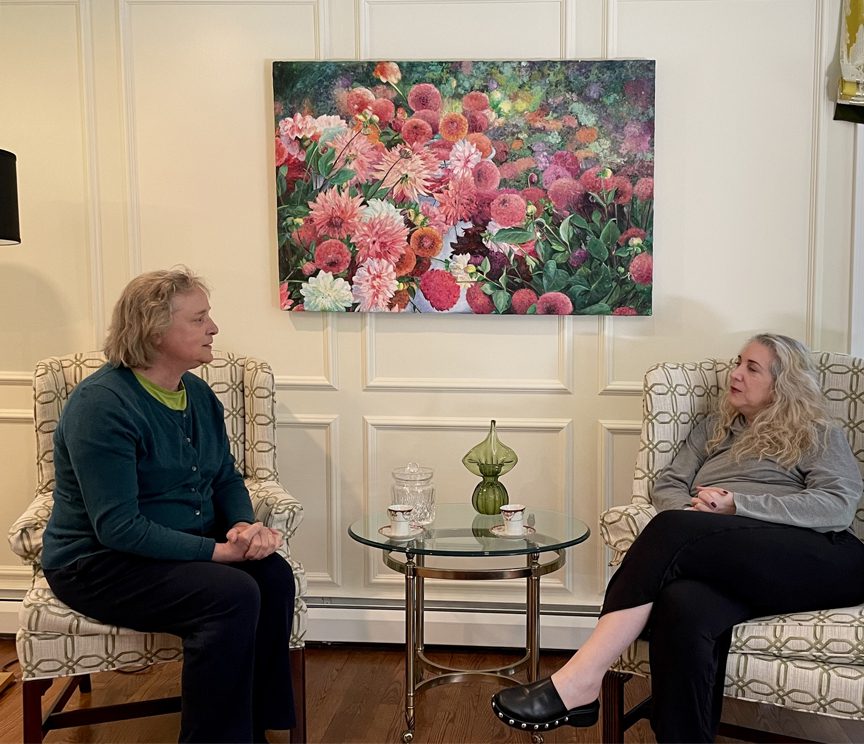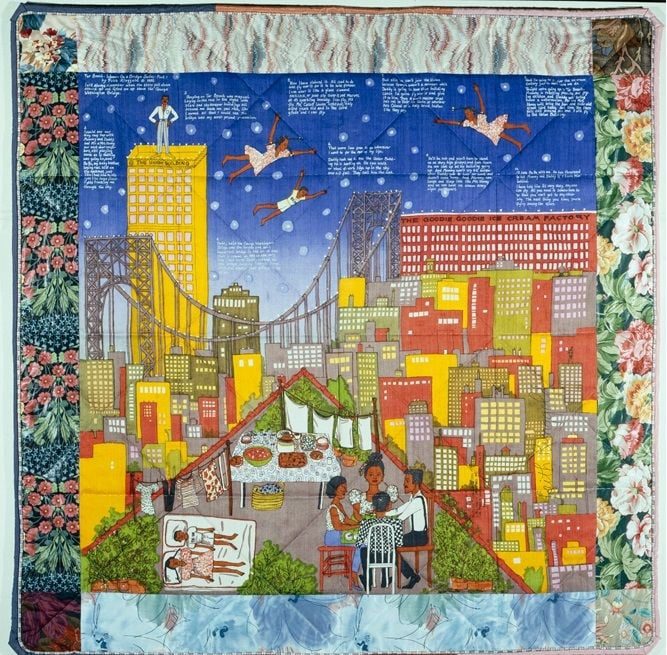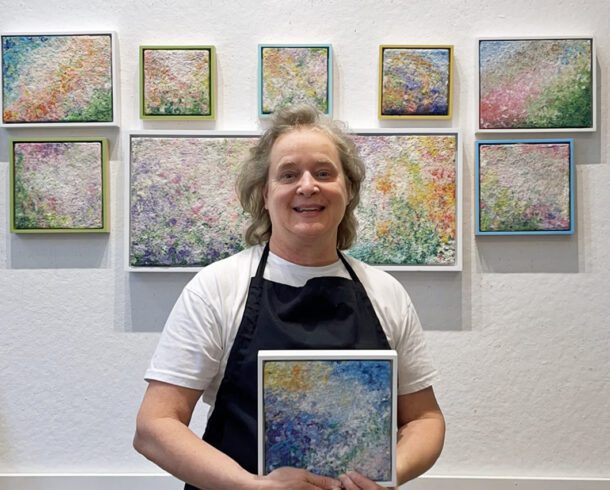So, I get a message from a lovely woman who wanted me to paint a dahlia garden for her newly redesigned home. She shared with me that dahlias were her favorite flower as they reminded her of her mother, whom she picked dahlias for and brought them to her when her children were young. The old-fashioned feel of the flower, and the peachy-pink tone felt nostalgic, emotional, and worthy of a commissioned painting.
We started out walking through a cutting garden that featured rows of dahlias. This being the garden she used to visit to pick the flowers for her mother. The rows were broken up only by rows of zinnias, purple, blush, and orange. Given the composition she was envisioning did not match the rows of flowers, I created an imaginary garden using photoshop and a professional photograph taken by a friend. Eventually, the composition came into view and I was ready to visually record the painted garden that reflected her memories with her mother.
Her request got me thinking about other women patron/artist relationships that I could write about. Much to my surprise, I found very few examples of this practice beyond my own experience in which I have been fortunate to have had many women collect my artwork. I can’t say for certain if they patronized me based on a commitment to support a woman artist or if they just liked my work enough to want to live with it on a daily basis. Either way, my research and the lack of examples I uncovered has made me even more grateful for their support.
To be sure, women artists have found patrons for their art, although far fewer than their male counterparts, but an exact match of a woman patron consciously commissioning a woman artist, well, let’s just say a dearth of documented examples emerged from my research. Here is what I found so far, please share any information you have and I will update this post with your contribution.
With the collector of Summer’s End, (2024). This painting of a dahlia garden was commissioned for this newly redesigned home. A perfect example of considering original art in the early stages of the design process, the subject, palette, and space for the painting were chosen before the construction work began.
55 7/8 x 44 in. (141.9 x 111.8 cm). MFA, Boston.
Granted, there are very few examples of women working as artists before the 20th century, and even fewer who had their work collected in any serious fashion, but I thought I’d find a few post WWII examples to go on. Did Peggy Guggenheim had support Lee Krasner in her parallel relationship with Jackson Pollock? Not hardly. In fact she took Krasner to court over a price dispute for Pollock paintings.
Ok, no go there. I assumed I’d find a list of women patrons for Louise Bourgeois’ work, but none surfaced from my research. And then there was Alice Neel. Did Linda Nochlin pay for her portrait of herself with her daughter Daisy, or simply agree to pose for her? I read an interview with Nochlin, very long and thorough, but she never mentions the portrait or the way in which it came about. In the video of Nochlin discussing the experience of sitting for Neel, she mentions that Neel “asked me to sit for the painting,” but she does not mention who paid for the painting, which is in the collection of the MFA, Boston.
.
What about Faith Ringgold, whose recent passing has left a void in the art world, especially amongst fiber artists? Although her work was collected by prestigious museums the world over, no mention of a woman patron from my research. There is a quote by Oprah Winfrey about consciously collecting art by women. “Over the years I bought a lot of wonderful art, but I never thought about was it by a woman or a man – I just thought, I like it. And now my whole perspective has changed, and so I am going to consciously be looking for women by women. So if we all do that, then this will be a big success.” Oprah has an impressive collection of art, and no doubt includes art by women artists, when I find specific examples, I’ll update this bog post.
Faith Ringgold, Tar Beach II (1990). ©Faith Ringgold/Artists Rights Society (ARS), New York.
I finally settled on the patronage Yoko Ono has embodied for Guerrilla Girls, the group of anonymous women artists who “use disruptive headlines, outrageous visuals and killer statistics to expose gender and ethnic bias and corruption in art, film, politics and pop culture.”
Yoko Ono posing with members of the Guerrilla Girls, 2010.
And so it was that my assumption of examples of women supporting women throughout art history was not as well-documented as I had imagined. What examples do you have of the practice? Please share them by responding to this post.





